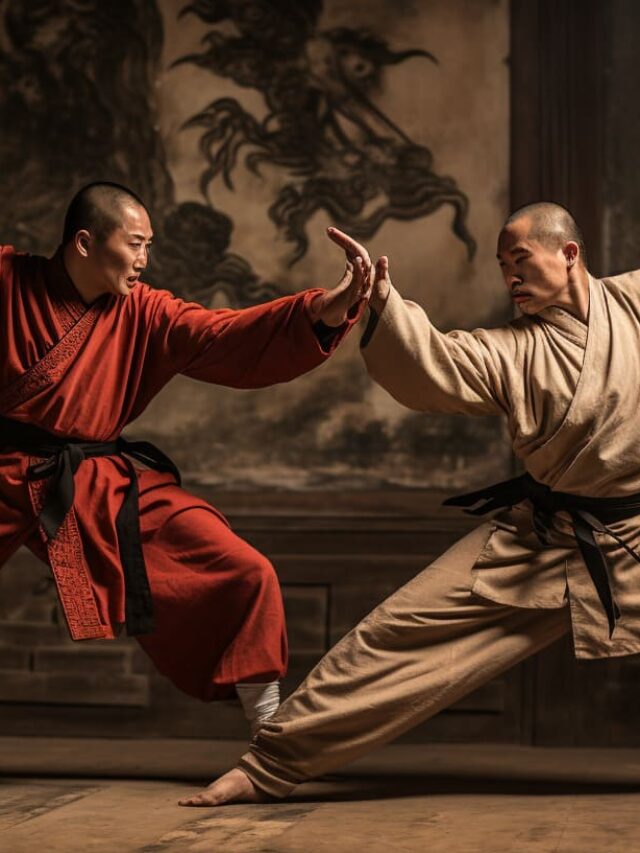Drunken boxing style, also known as Drunken Fist or Zui Quan in Chinese, is an ancient and intriguing form of Chinese martial arts. This distinctive style draws its inspiration from the movements of a drunk person, characterized by fluid and unpredictable motions. As a result, practitioners of this martial art not only showcase their physical prowess but also captivate audiences with its entertaining visual appeal.
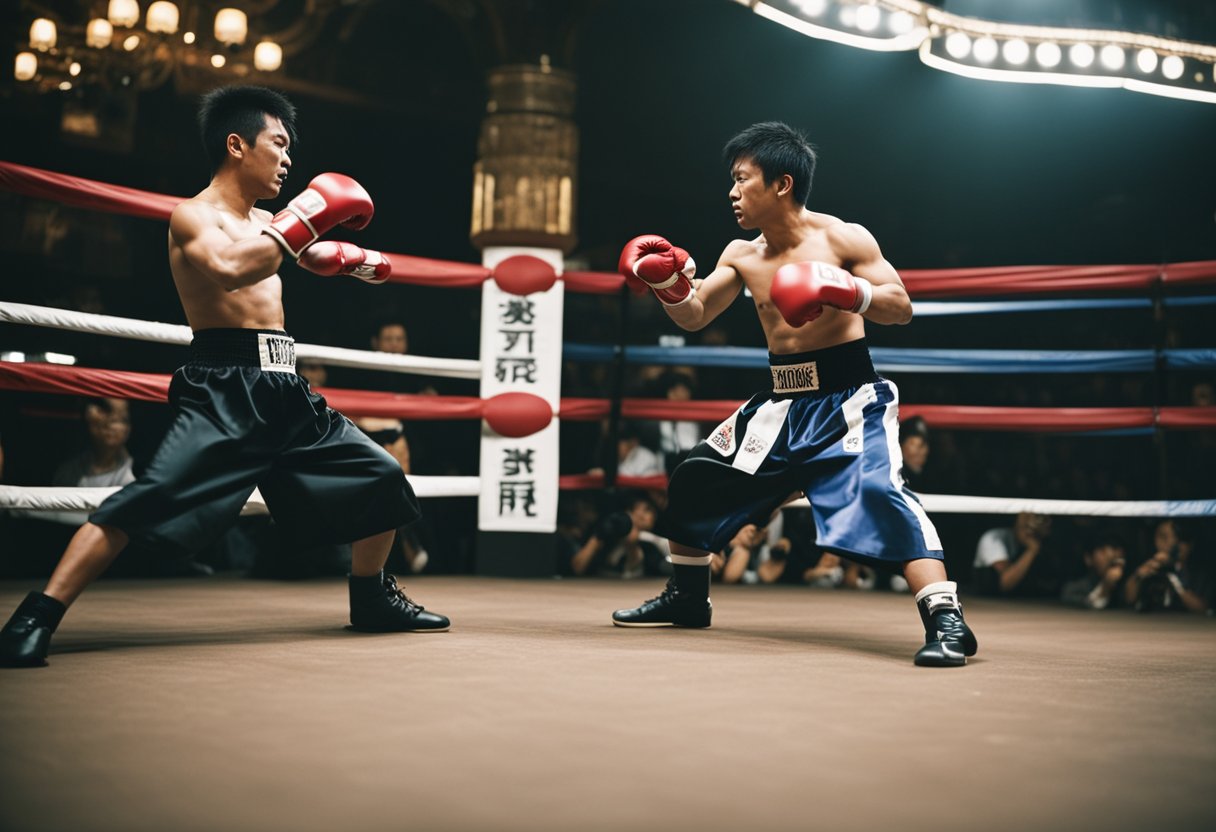
The origins of drunken boxing can be traced back to both Buddhist and Daoist religious communities in China. This versatile style involves using various stances and techniques, such as the Drunken Fist. The Drunken Fist itself consists of a unique hand position, with the index finger hooked and the thumb and index creating a “C” shape while the rest of the hand forms a fist.
As part of the broader spectrum of Chinese martial arts, drunken boxing offers an alternative approach to self-defense and combat. Its deceptive and almost whimsical nature often catches opponents off guard, making it an effective and strategic choice for martial artists looking to diversify their skillset.
Origins and Evolution
Drunken Boxing, also known as Drunken Fist or Zui Quan in Chinese, is a traditional martial art that originated in China. It is closely related to the Buddhist and Daoist religious communities. The Buddhist style has connections to the Shaolin Temple, while the Daoist style is based on the tale of the drunken Eight Immortals. This unique and entertaining style is characterized by its fluid and unpredictable movements that imitate the actions of a drunken person.
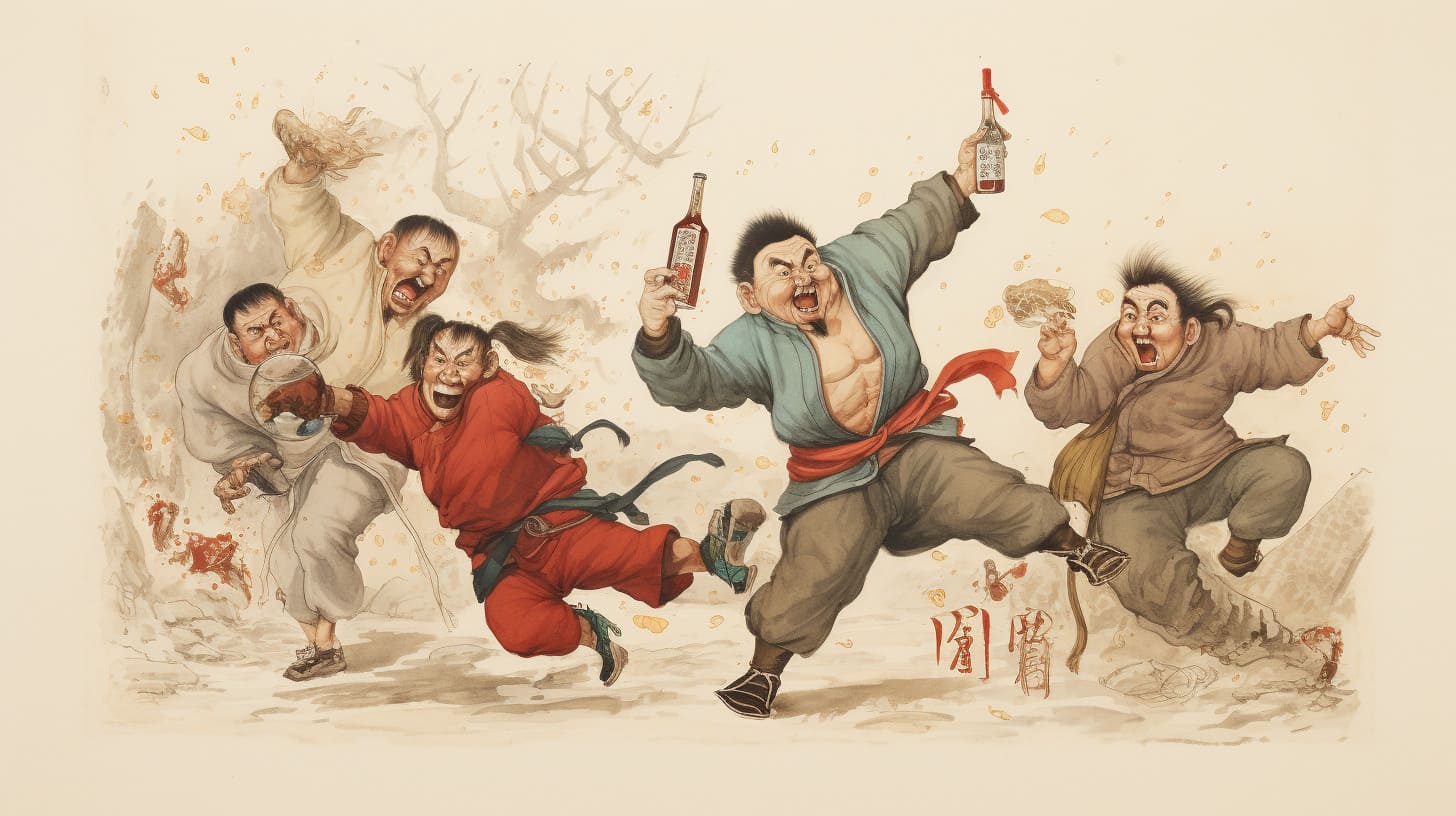
The origins of Drunken Boxing are believed to have roots in the Song Dynasty (960–1279) period. The practice of this martial art combines elements of both Wushu and Kung Fu, making it a distinct form of Chinese martial arts. Although it shares some similarities with Shaolin Kung Fu, Drunken Boxing has its own set of unique techniques and movements.
Some stories credit the development of Drunken Boxing to the monks of the Shaolin Temple. It is said that this style of martial art was originally created to help the monks preserve their combat skills while concealing their identity as fighters. By disguising their martial prowess through seemingly clumsy and uncoordinated movements, the Shaolin monks were able to deceive their enemies and attack when least expected.
The practice of Drunken Boxing involves several distinct techniques that take inspiration from the movements of drunken individuals. These techniques are characterized by their fluidity, unpredictability, and deceptive nature, allowing fighters to confuse and surprise their opponents. Additionally, the practice of Drunken Boxing heavily emphasizes the use of feints, making it difficult for opponents to predict the next move.
Despite being an ancient martial art, Drunken Boxing continues to evolve and adapt. Today, this style is still practiced and taught in various forms around the world. Its influence can be seen in modern martial arts competitions, as well as in popular culture, where it has been featured in several movies and television shows.
Overall, Drunken Boxing remains an important part of Chinese martial arts history and culture. Its unique combination of traditional Buddhist and Daoist elements, paired with the unpredictable and fluid movements, make it a captivating and effective martial art practice.
Techniques and Tactics
Movement and Footwork
Drunken boxing is a unique martial art that imitates the movements and behavior of a person under the influence of alcohol. The key aspect of this style lies in its movement and footwork, which includes swaying, stumbling, and unsteady footwork. These erratic movements confuse and deceive opponents, making it difficult for them to predict the next move. Fluidity and quick shifts in weight distribution are essential for the practitioner to adapt spontaneously and intuitively in combat.
Stances and Postures
The stances and postures in drunken boxing are designed to mimic the eight drunken immortals, each representing a different aspect of the style. These postures often involve exaggerated, off-balance positions, with the body leaning or swaying heavily to one side. The hands may be formed into fists, or the fingers may be used to create powerful joint locks. Despite the seemingly disorganized appearance, these postures provide stability and power for the fighter.
Strategies and Deceptions
In drunken boxing, a crucial tactic is the use of deception and confusion to disorient the opponent. This is achieved through unpredictable movements, sways, and feints that lure the opponent into making mistakes. By mimicking the erratic actions of an intoxicated person, the drunken boxer can effectively hide their intentions and intentions until the opportune moment to strike or defend arises. The fluidity of movements in this style allows the practitioner to maintain high levels of adaptability and spontaneity during combat.
Offensive Techniques
The offensive techniques in drunken boxing are as diverse and varied as the stances and postures. They may include powerful kicks, swift hand strikes, joint locks, grapples, and even moves that involve falling or stumbling to the ground. Some techniques may involve a grabbing or pushing motion, while others might involve leaning or lifting to unbalance the opponent. Additionally, the drunken boxer may utilize moves that look like an unintentional stumble or sway to mask the real intention of the technique, adding an extra layer of deception and uncertainty for the opponent.
The mastery of these techniques and tactics makes drunken boxing an effective and unpredictable martial art, capable of deceiving and overcoming even the most skilled opponents.
Influence and Representation in Popular Culture
Drunken boxing, also known as Zui Quan, has captivated audiences and made its way into popular culture through various movies and television shows. One of the most famous examples is Jackie Chan’s 1978 film, Drunken Master. In this movie, Chan portrays a young and rebellious martial artist named Wong Fei-hung, who learns the art of drunken boxing to overcome his enemies.

The Forbidden Kingdom,
The Forbidden Kingdom, featuring Jet Li and Jackie Chan, also showcases the drunken boxing style. In this film, Jet Li plays a drunken immortal who teaches the protagonist kung fu, incorporating elements of Zui Quan in their training. The unpredictable nature and stunning visuals of drunken boxing create an engaging and entertaining experience for viewers.
Drunken boxing has also made its way into the world of animation, with the popular anime series Naruto featuring a character named Kimimaro who displays Zui Quan techniques while fighting. In the well-known anime Dragon Ball, several characters exhibit this martial art, adding an amusing and unique twist to their battles.
The martial art has even inspired choreography in Western cinema. The film The Matrix incorporated Zui Quan-inspired fight scenes, which added a level of complexity and fluidity to the characters’ movements. This blend of the ancient martial art with modern filmmaking techniques demonstrates how deeply rooted drunken boxing has become in popular culture.
Through these various representations, drunken boxing, with its fluid movements and deceptive strikes, has left an undeniable mark on popular culture. Iconic characters like Jackie Chan’s Wong Fei-hung and Jet Li’s immortal in The Forbidden Kingdom continue to serve as intriguing examples of this ancient martial art.
Drunken Boxing in Modern Competitive Fights
Drunken Boxing, also known as Drunken Fist or Zui Quan, is a traditional martial art originating from China. One of the more famous practitioners of this style is Emanuel Augustus, a professional boxer who gained popularity for his unpredictable movements and showboating. He faced famous opponents, including the legendary Floyd Mayweather.
Augustus, known for his entertaining and unorthodox fighting style, was a difficult opponent to many, including Mayweather. In their meeting, Augustus managed to give Mayweather a tough fight and showcased the effectiveness of the drunken boxing style against top-tier boxers. Although Augustus ultimately lost, it highlighted the potential of this unique style in the competitive boxing arena.
Despite its rich history and success stories like Augustus’, drunken boxing is rarely seen in modern mixed martial arts (MMA) competitions. MMA fighters usually focus on an array of functional and versatile techniques encompassing striking, grappling, and submissions. However, the unpredictable movements of drunken boxing can still add an element of surprise and entertainment in professional fights.
For example, in MMA, incorporating some elements of drunken boxing can make a fighter’s movement less readable, presenting challenges to their opponents. Coupled with a diverse arsenal of techniques from other martial art disciplines, elements of drunken boxing can still find utility in modern combat sports.
One notable moment in recent history is when an IBA Light Welterweight Title challenger incorporated drunken boxing as part of his fighting style. This versatility shows that while it may not be the primary discipline for many fighters, the influence of drunken boxing is still present in competitive arenas.
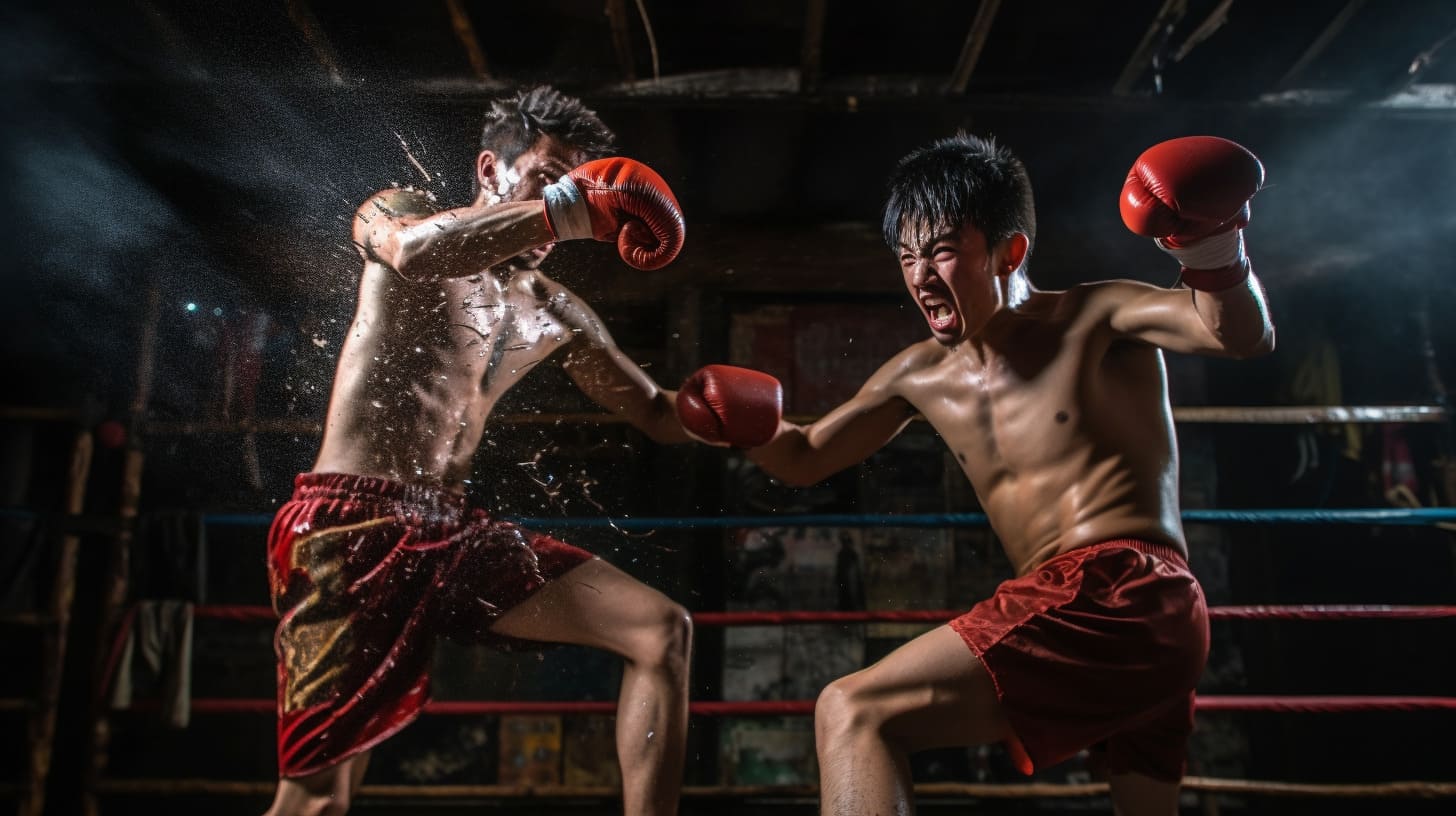
In conclusion, drunken boxing remains an exciting and somewhat unorthodox martial art that can bring some surprise elements and unpredictability to modern combat sports. The legacy of fighters like Emanuel Augustus serves as a shining example of how the style can challenge even the most skilled competitors. Although not commonly seen in MMA, its unique movements can still find a place in the array of martial arts techniques used in today’s competitive fighting landscape.
Controversies and Criticism
Drunken boxing, a martial arts style that imitates the movements of a drunk person, has faced its fair share of controversies and criticisms. One of the primary concerns involves the potential glorification of alcohol consumption. Critics argue that associating martial arts with alcohol may encourage irresponsible drinking behavior, especially among impressionable young practitioners.
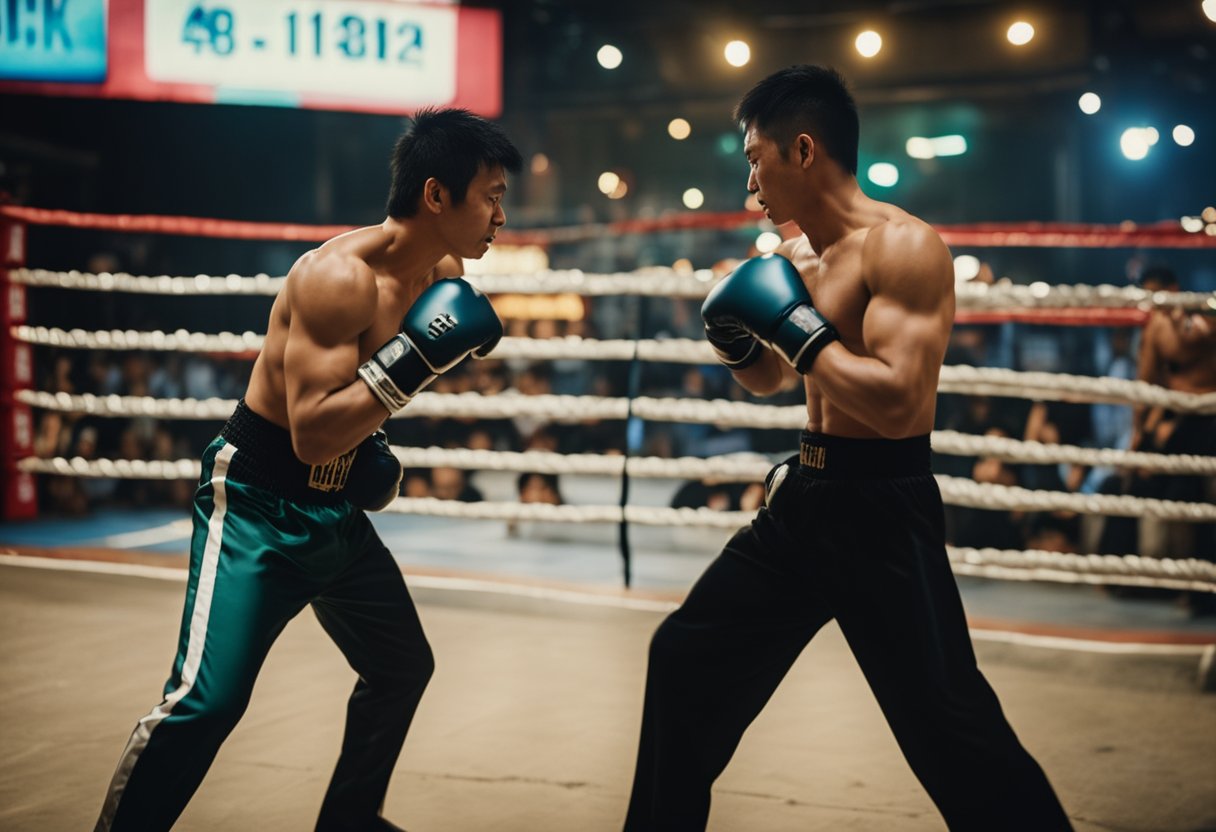
Another point of contention is the difficulty in mastering the drunken boxing style. The unconventional movements require a significant amount of coordination, flexibility, and balance. As a result, some martial artists argue that it is not the most practical or efficient fighting style. They believe that other styles are more suitable for self-defense situations, where quick reflexes and straightforward techniques are crucial.
Despite its name, the effective practice of drunken boxing does not actually require alcohol consumption. It is not about being intoxicated, but rather about the fluidity, unpredictability, and deceptive movements. However, this misconception has led some critics to dismiss the legitimacy of the style, equating it to mere performance art or considering it less effective in real combat situations.
In recent discussions, like on Reddit, some martial artists believe that drunken boxing is more of a “personality” that can be incorporated into other martial arts rather than a standalone style. They suggest that its unique movements and techniques can complement and enhance a practitioner’s existing skill set, rather than serving as a core fighting method.
In conclusion, drunken boxing faces controversies and criticisms related to its association with alcohol, its perceived difficulty, and its effectiveness as a martial art. However, the style continues to intrigue and inspire practitioners who appreciate its unique approach and deceptive techniques.
FAQ’s
What are the origins of drunken boxing?
Drunken boxing, also known as Drunken Fist or Zui Quan, is a Chinese martial art that imitates the movements of a drunk person. Its origins are mainly traced back to the Buddhist and Daoist religious communities. The Buddhist style is related to the Shaolin temple, while the Daoist style is based on Daoist principles.
Who are some famous practitioners of drunken boxing?
While not many well-known practitioners strictly focus on drunken boxing, the style has been popularized by legendary martial artist and actor Jackie Chan in his movies. His portrayal of the style has undoubtedly brought it to the attention of a broader global audience.
How is drunken boxing different from traditional kung fu?
Drunken boxing is a distinct style within the larger realm of kung fu. The primary difference between drunken boxing and other kung fu styles is the way practitioners imitate the movements of a drunk person, using staggering, swaying, and fluid motions to confuse and evade opponents.
What are the key techniques in drunken boxing?
In drunken boxing, practitioners use a mix of offensive and defensive techniques, fluidity in movements, and deceptive footwork to confuse opponents. The key to the style lies in its unpredictability. Unlike traditional kung fu, which may emphasize rigid and structured forms, drunken boxing relies on the element of surprise and off-balanced movements to create openings.
Has drunken boxing been used effectively in real fights?
While the effectiveness of drunken boxing in real fights is debatable, some fighters have attempted to incorporate elements of it into their fighting styles. The use of unpredictability and unconventional movements derived from drunken boxing can be an asset in certain situations, especially if the opponent is unfamiliar with the style.
Are there any prominent movies featuring drunken boxing?
Jackie Chan's film "Drunken Master" (1978) and its sequel "Drunken Master II" (1994) are undoubtedly the most famous movies featuring the drunken boxing style. These films showcase the unique techniques, characteristics, and humor associated with the martial art, and have significantly contributed to its global popularity.

